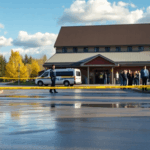Table of Contents
The ongoing Israeli-Palestinian conflict has reached yet another critical junction. As world leaders gather at a United Nations conference aimed at galvanizing support for a two-state solution, one has to wonder: can this meeting really make a difference? Despite the notable absence of the United States and Israel, the event highlights the urgent need for progress in a region long plagued by violence and instability.
This conference isn’t just another talk shop; it has the potential to spark real change in a conflict that has persisted for decades.
Context of the Conference and Its Significance
Looking back to September last year, the 193-member United Nations General Assembly made a significant decision to hold this conference in 2025.
This move reflects the international community’s growing concern over the lack of resolution to the Israeli-Palestinian dispute. Jointly hosted by France and Saudi Arabia, the event was initially postponed due to escalating tensions following Israeli military actions against Iran.
Now, as ministers from various nations gather, the focus has shifted to establishing a roadmap that emphasizes both Israeli security and Palestinian aspirations for statehood. But how will this actually play out?
During the opening session, United Nations Secretary-General Antonio Guterres made a compelling case for turning this conference into a “decisive turning point.” He stressed that it must go beyond mere rhetoric, urging attendees to ensure that it leads to tangible progress toward ending the occupation and achieving a viable two-state solution.
This sentiment resonates with many who have witnessed countless diplomatic initiatives falter in the past. Are we finally ready to see some action?
Key Highlights from the Conference
Saudi Foreign Minister Prince Faisal bin Farhan Al Saud addressed the audience with a strong call to action, urging all nations to embrace a comprehensive approach that respects Israel’s security needs while also laying the groundwork for Palestinian statehood.
His remarks highlighted the delicate balance that must be struck if any progress is to be made in this long-standing conflict. Is it possible to find common ground?
French Foreign Minister Jean-Noel Barrot echoed this sentiment, emphasizing the need to transition from the current state of war in Gaza to a broader resolution of the Israeli-Palestinian conflict.
He asserted that a political, two-state solution represents the only viable path to peace—a view shared by many in the international community. Additionally, French President Emmanuel Macron’s announcement of intentions to recognize a Palestinian state during the upcoming UN General Assembly signals a significant shift in diplomatic posture. Could this be the breakthrough we’ve been waiting for?
The Ongoing Conflict and International Reactions
The backdrop of this conference is the continuing violence in Gaza, which has escalated significantly since October 2023 when Hamas launched an attack on southern Israel, resulting in substantial casualties on both sides. Israeli military actions have led to devastating losses among the Palestinian population, with health authorities reporting tens of thousands of deaths, predominantly among women and children. Despite mounting international pressure to cease hostilities, the absence of the US and Israel from the conference underscores the complex dynamics at play. What does this mean for future negotiations?
The US State Department has labeled the conference as “unproductive and ill-timed,” characterizing it as a “publicity stunt” that could hinder peace efforts. This highlights the stark divisions within the international community when it comes to addressing the ongoing conflict. Skepticism surrounds the diplomatic push for a two-state solution, with some viewing it as a reward for terrorism rather than a legitimate peace initiative. Nevertheless, calls for US engagement from regional leaders like Prince Faisal suggest a desire for a more active role from Washington in facilitating dialogue and resolution. Can the US shift its stance?
Conclusion and Future Prospects
As the conference unfolds, the key question remains: can it truly serve as a turning point in the quest for peace? The historical complexities and entrenched positions of both Israel and the Palestinians present significant challenges. However, the gathering of international leaders and a renewed commitment to dialogue provide a glimmer of hope that a path toward reconciliation and a two-state solution can be forged. The international community’s support for Palestine’s bid for full UN membership reflects a growing acknowledgment of the Palestinian plight, though the road ahead remains fraught with obstacles.
Ultimately, resolving the Israeli-Palestinian conflict will require sustained international engagement, a willingness to negotiate in good faith, and a recognition of the legitimate aspirations of both peoples. Only then can we hope to achieve lasting peace in this troubled region. Will this conference be the catalyst for change, or just another missed opportunity?





